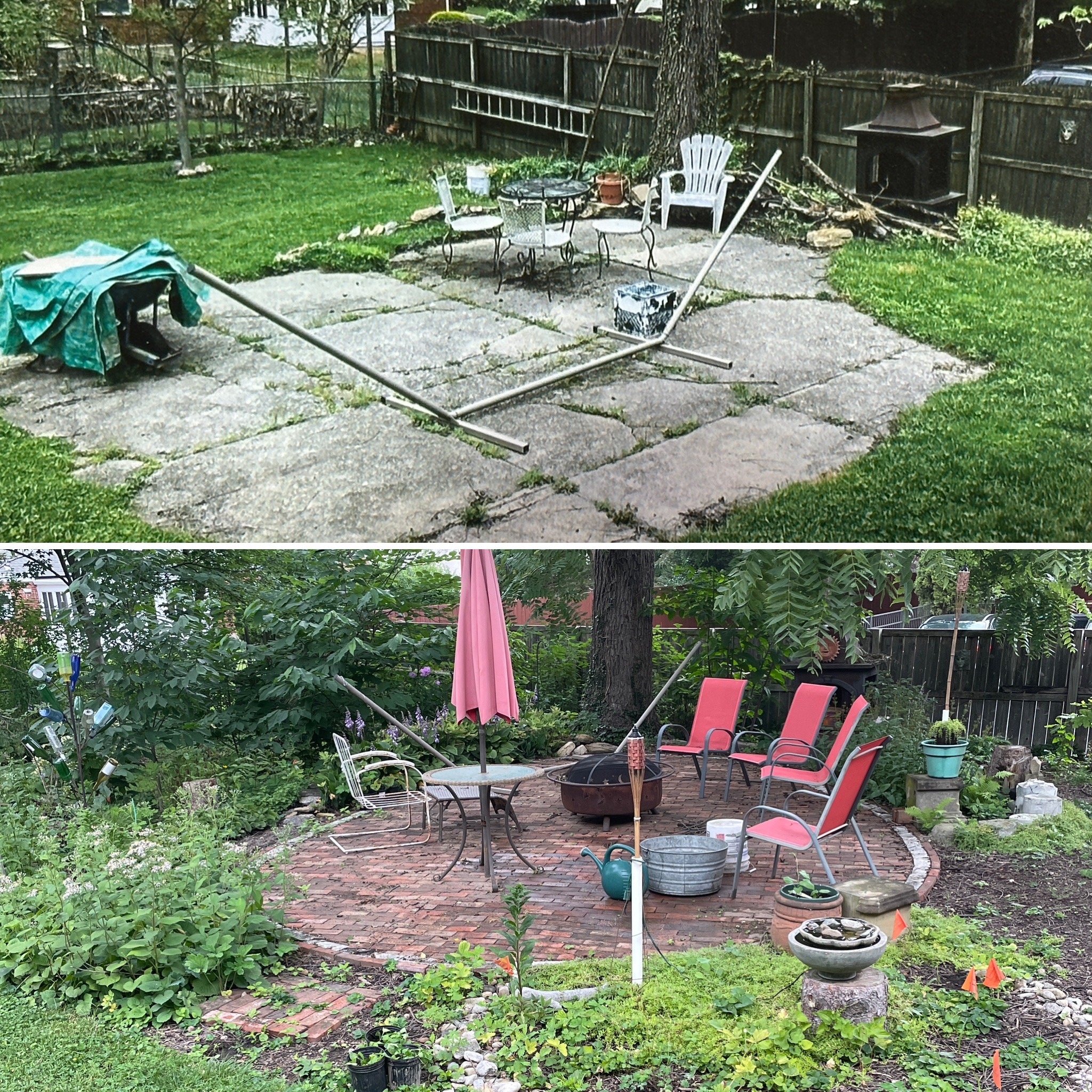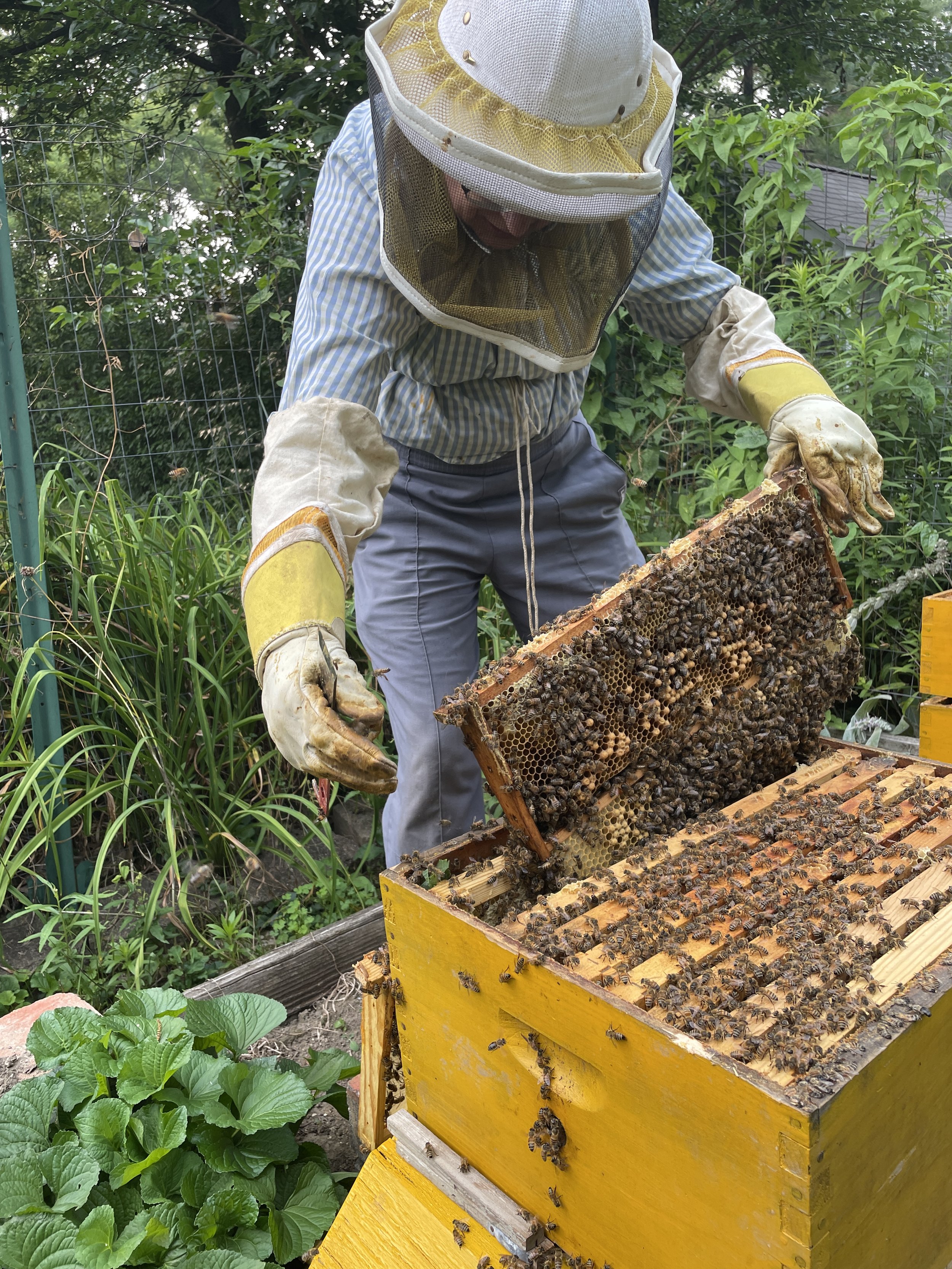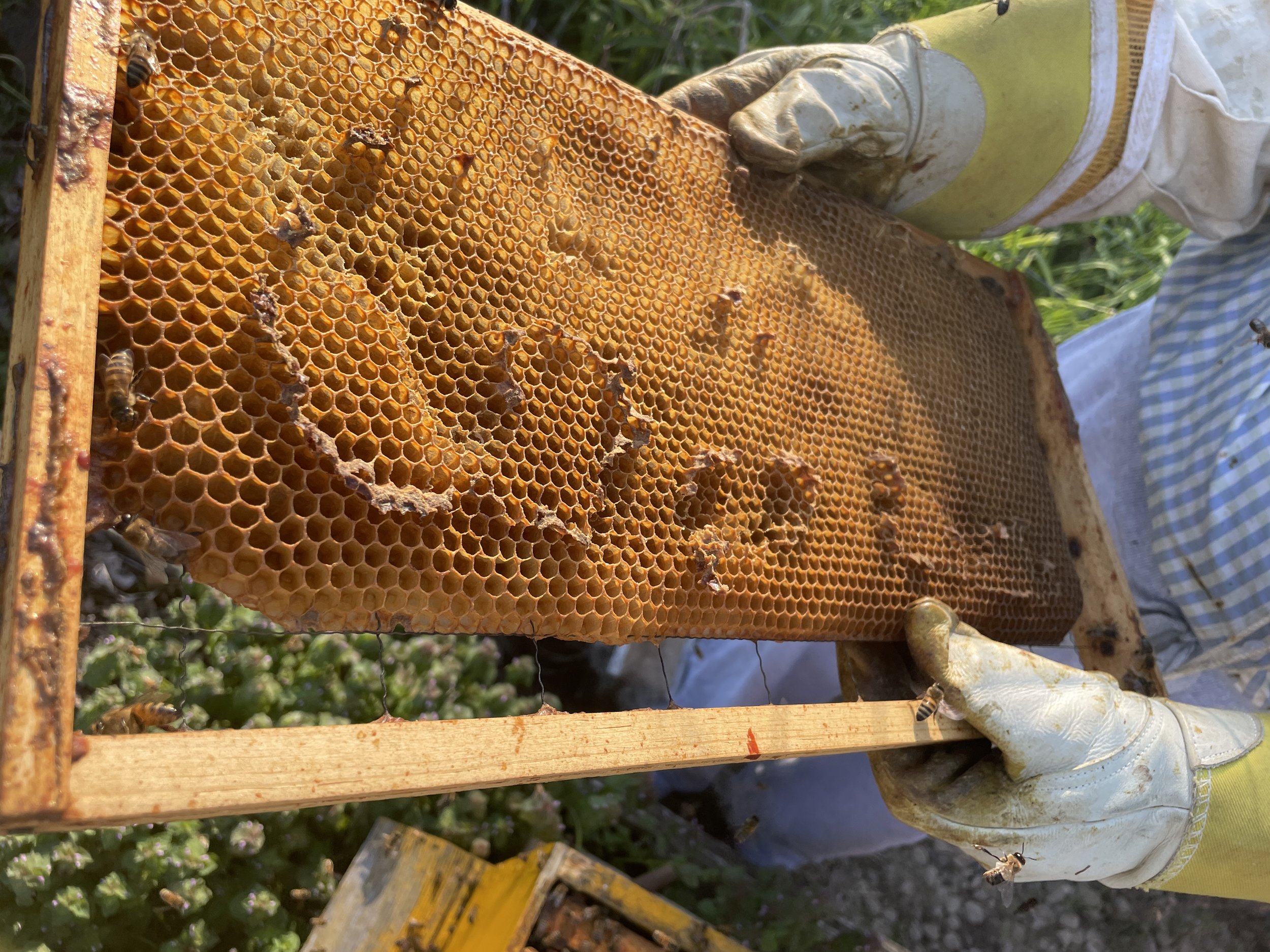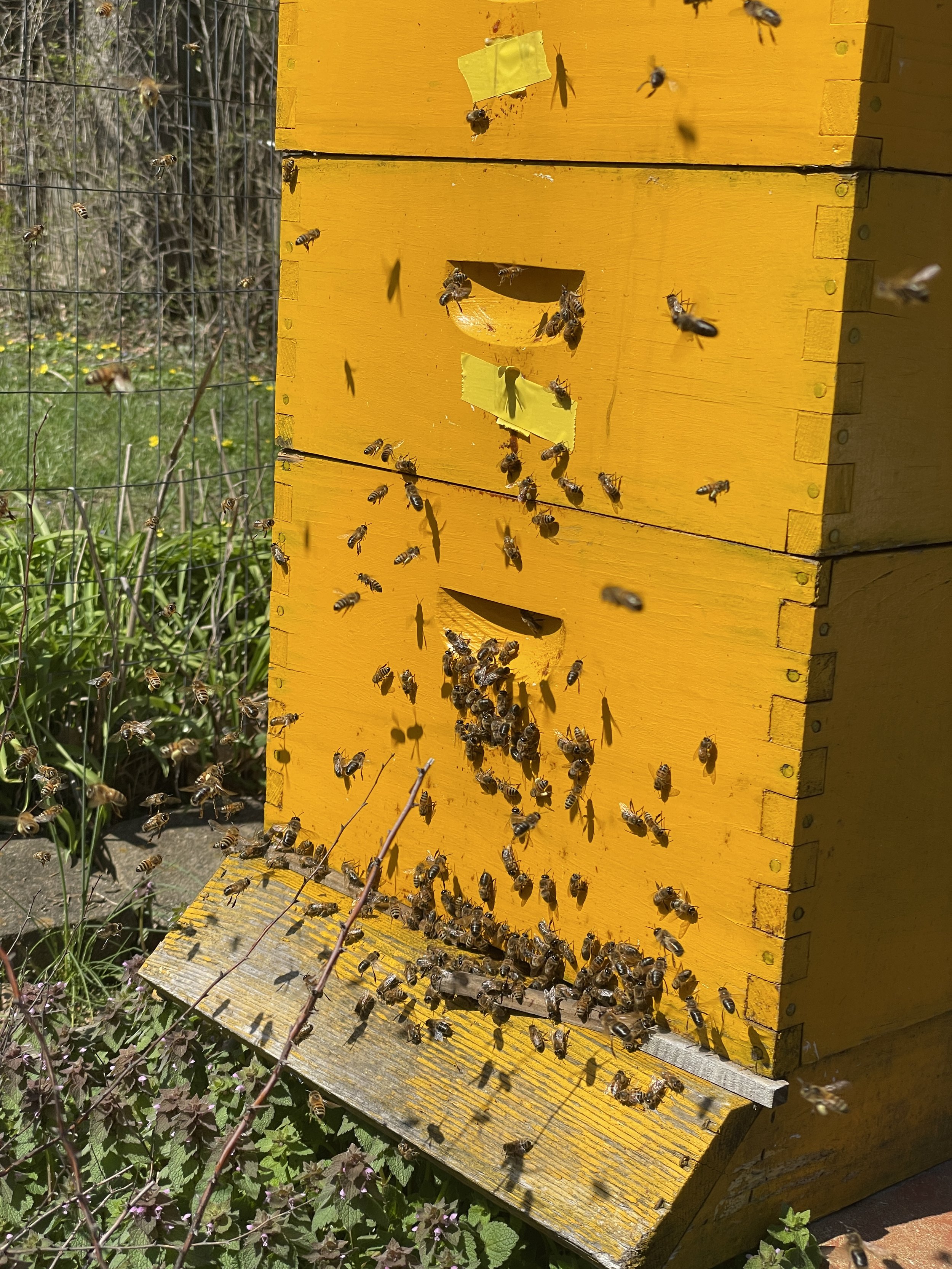Why does MCA staff member Linda Keller celebrate National Honey Bee Day?
“Well beesides gratitude for pollinating some of my favorite things (apples, blueberries, peaches, basil, melons, sunflowers, and almonds) beecause bees are all the buzz in my backyard!
Before and After
Let me tell you a roundabout story about how I came to be a beekeeper.
In 2016, after my long time friend John Magee introduced me to native plants through his Native Plant Podcast, I made a commitment to learn more about how these specialized plants can positively impact the environment. I sheet mulched over all the grass in ¼ of my backyard and committed myself to creating a native woodland. Seven years later, I’m fully committed to planting native and to support the benefits it brings to our ecosystem. My water bottle sports the slogan “I Plant for Pollinators”. Pawpaw, foxglove beardtongue, great blue lobelia, cardinal flower, common chokeberry, wild geranium, red dosier dogwood, false solomon seal, wild ginger, anise hyssop, large-leaved aster, blue mistflower, oak, walnut, and more. I want it all!
Fast forward to 2022, when a friend asked if I wanted to have a honeybee hive in my backyard and next thing I knew, I was a beekeeper. Over the past year I have asked many questions and learned more than I ever thought possible about bees.
In my thirst for knowledge about my honey bees, I’ve also discovered that honeybees are NOT native to North America! (So much for my native woodland!) Maybe they are NOT native, but they are very important!
Of the 20,000 species of bees, only six or seven species produce honey. One of these, the honeybee (Apis mellifera), was exported from Europe to North America in the 17th century to make honey & wax and for their pollination services. They can be considered livestock animals, raised and managed by humans/farmers. Honeybees are highly social insects that live in colonies. One queen reigns over a large family of female worker bee offspring and a handful of male drones. The queen only leaves the hive once in her life, to take her mating flight, then spends the remainder of her days laying + or - 800,000 eggs over her lifespan (up to 5 years).
Honeybees are holometabolous insects and have four stages in the life cycle: egg, larvae, pupa, adult. 98% of the queen’s eggs will become female worker bees who live short but busy lives (approximately 30 days). What about the other 2%? Those eggs will become lazy male drones whose one important purpose is to mate with another hive’s queen, a process that literally kills him.
The female bees do ALL the work needed to keep a hive healthy and productive. Sterile worker bees rotate through a specific sequence of jobs during their lifetime (cleaning, hive maintenance, temperature control, processing nectar, feeding others, building and repairing comb, guarding the hive, and FINALLY, foraging for nectar and pollen). How, pray tell, do they know when to switch jobs? Bees communicate with each other using pheramones (chemical messages), body language (sometimes called waggle dances), vision, scent, and taste! Sometimes they move to a new job because their body no longer allows them to accomplish their current job (i.e. after about three weeks of life, the workers bees food and wax glands atrophy, so they shift to foraging duty).
At any one time, 50,000-80,000 bees are living in a healthy hive….trust me that is a lot of bees to consider and even to listen to!
As I mentioned, only 6 of the 20,000 species of bees are “honeybees”. That leaves 19,994 other species of bees, many of which ARE native to our region! These other important native bees often live solitary lives or in small ground nests. If you’ve ever heard of a “bee hotel”, those are meant for native bees. They are the reason many native plant gardeners do NOT keep clean and tidy garden beds in spring! (They are waiting to cut down dry hollow stems until AFTER native bees have had a chance to hatch.)
Listen to the podcast about native bees
Native Melittology (INDIGENOUS BEES) with Krystle Hickman
Read More on the untidy garden bed!
Learn how to preserve habitat for native bees.
take a peek at the life of native bees
PBS documentary by wildlife filmmaker, Martin Dohrn.
Am I starting to sound like a MELLITOLOGIST? To be honest, I’ve only touched on the tip of the iceberg of factoids I’ve learned so far….there is so much to know and so many questions still unanswered. Each fact I learn seems more interesting than the one before. On my current RESEARCH TO DO list is:
“What did the bee say the flower?”
How do bees make wax for the cells?
How does nectar become honey?
What IS propolis? How do they make it and from what?
Do bees have noses? How do they smell?
Do they find flowers by smell? If not, how?
When there is a swarm, how do they decide who stays and who goes?
When is a swarm considered “wild”? Is it wild or feral?
Why do bees buzz near my ears? Do they like/dislike gray hair or are they trying to make me think they are bigger than they are?
eating bees?
A yummy recipe!
Learn More About BEES
Beginners Field Guide to Identifying Bees
Colorado State University Extension















